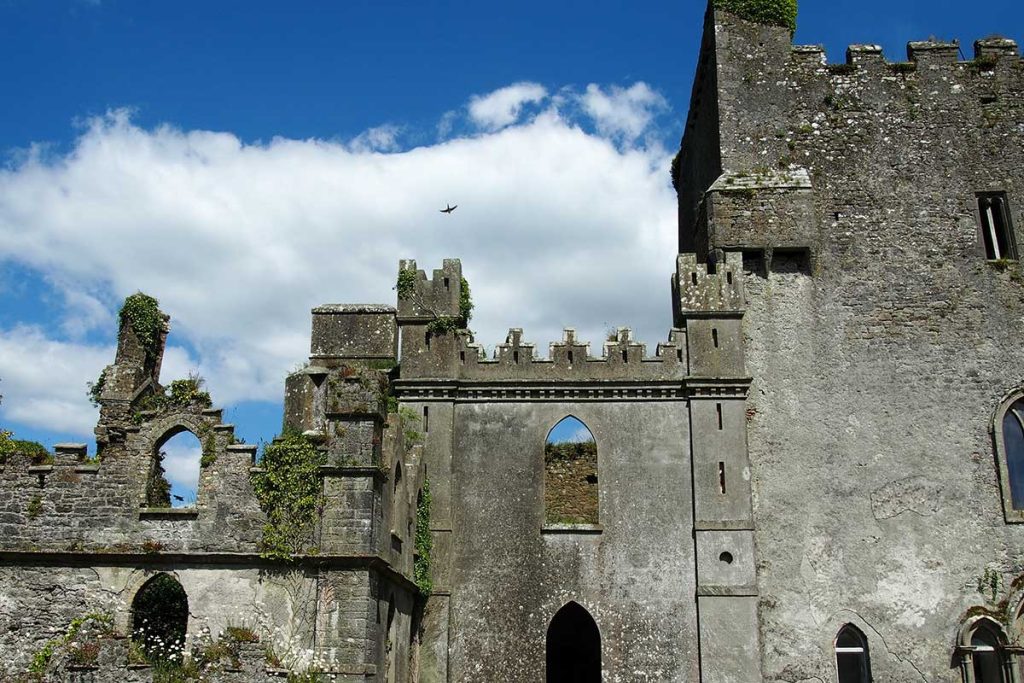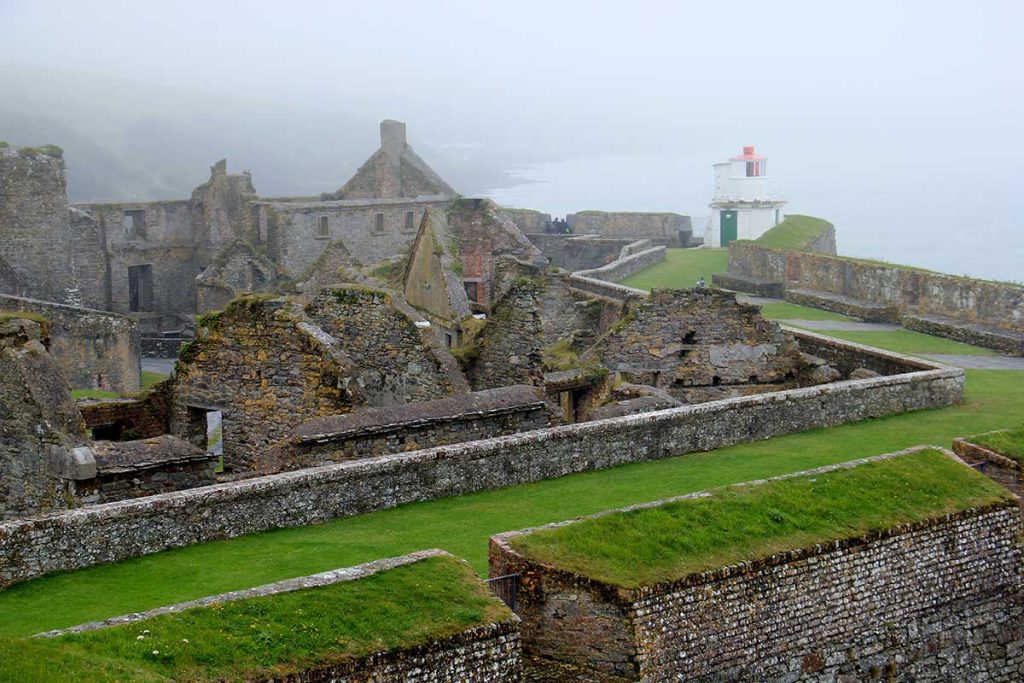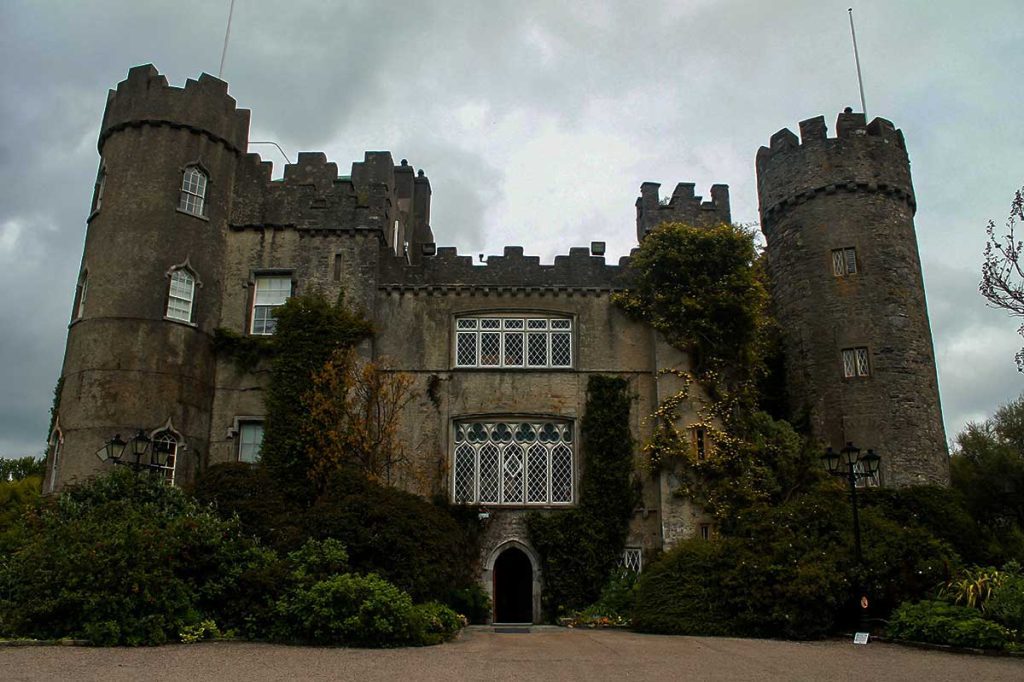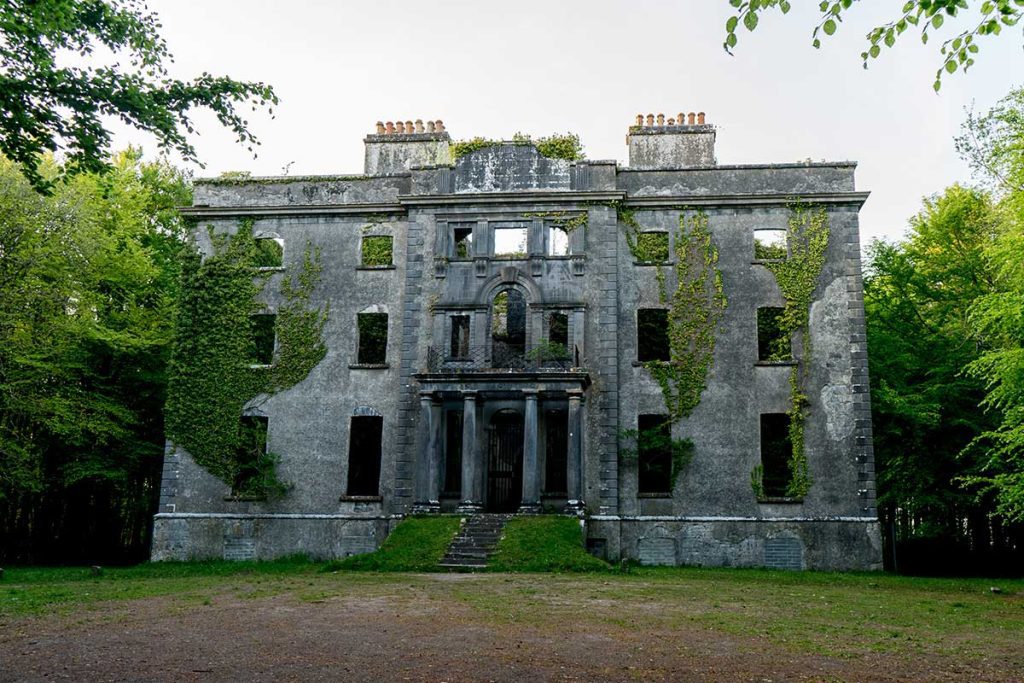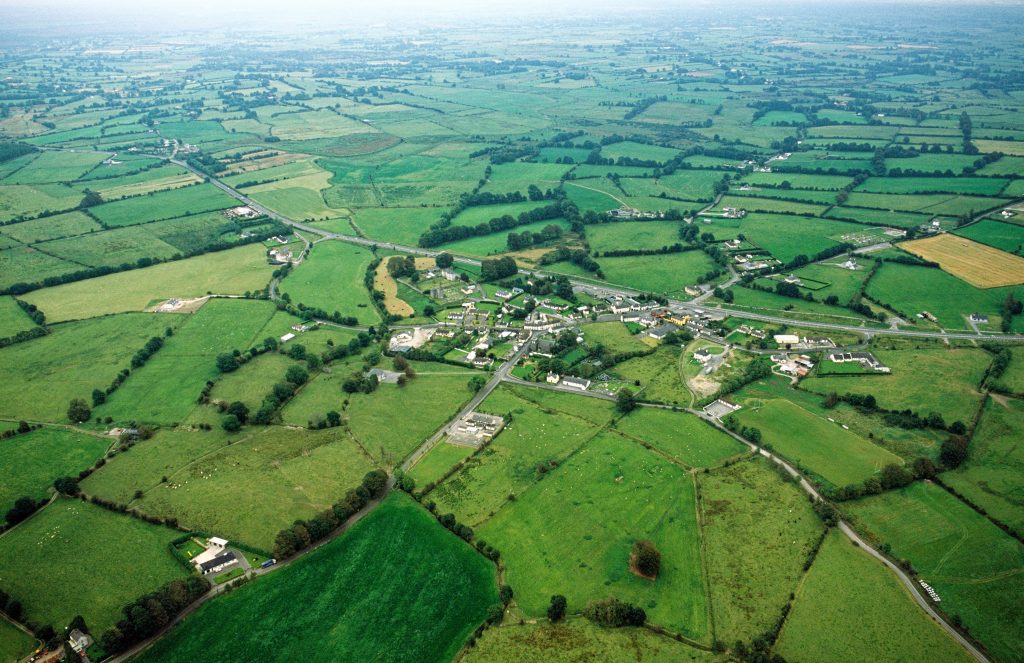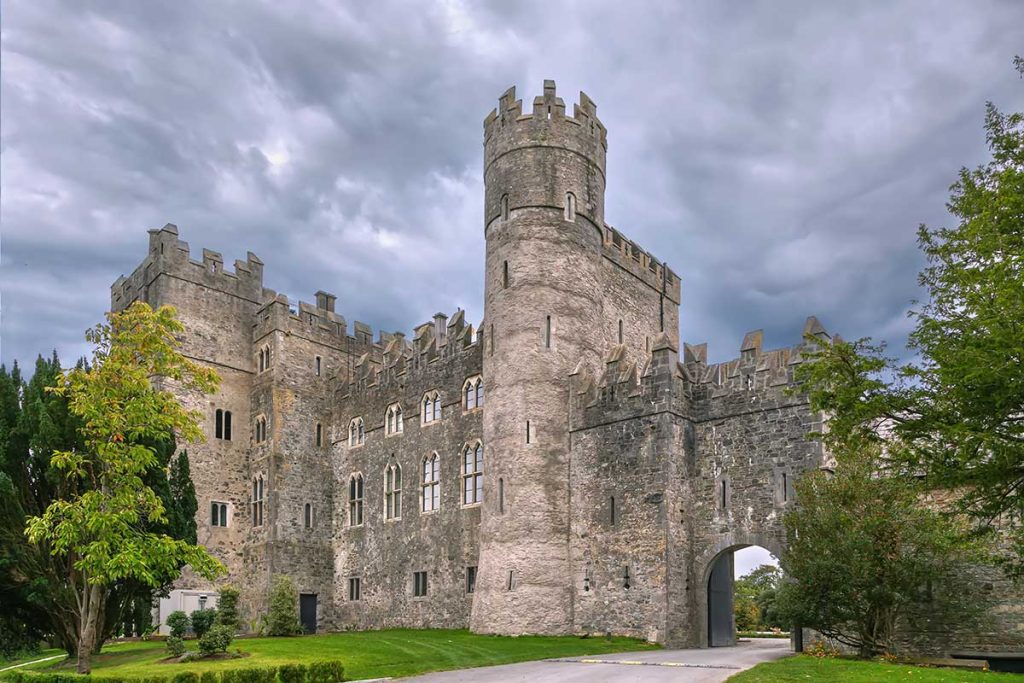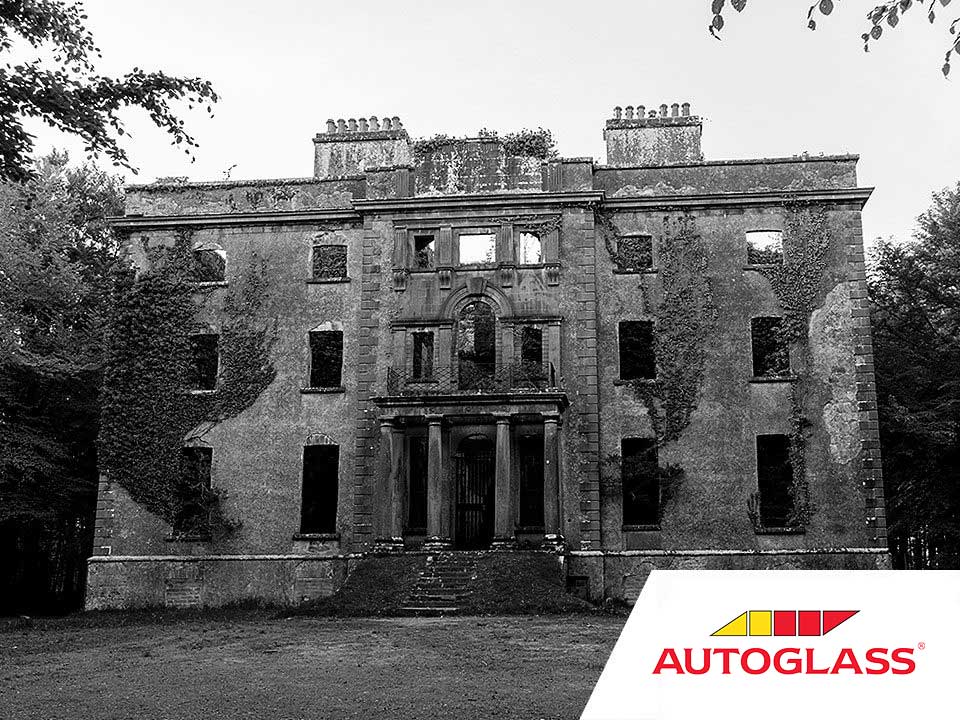
13 of Ireland’s Most Haunted Sites
We love some freaky folktales and ghoulish ghost stories in the run up to Halloween. With spooky season in full swing, why not indulge in some Irish ghost stories and let us walk you through some of Ireland’s most haunted sites. Read on if you’re feeling brave! Don’t say we didn’t warn you…
1 – Loftus Hall – Wexford
The history of Loftus Hall, a large mansion house located along the Hook Peninsula dates back to the 1300s. The original Hall was built in 1350 by the Redmond family and was known as Redmond Hall until the 1650’s when it was given to English Planters – the Loftus Family – and henceforth was known as Loftus Hall.
According to legend, one stormy night a stranger approached Loftus Hall on horseback and was invited in by the Tottenham family who were resident in the mansion at the time. The young Lady Anne Tottenham became immediately fascinated by the mysterious stranger. One night while playing cards, Lady Anne dropped a card. When she bent down to retrieve the card, she caught a glimpse of the stranger’s legs under the table. Lady Anne was shocked to see that the stranger had cloven hoofs instead of feet! With that, the stranger shot through the roof in a ball of flames. The story goes on to say that Lady Anne never recovered from her ordeal and was locked in the tapestry room where she died years later. Ever since her death, servants and family members reported seeing the ghost of Lady Anne wandering the house.
Since 2012, Loftus Hall has welcomed members of the public for guided tours around the property, although many rooms remain off-limits due to safety concerns. Some of those who have entered the house, claim to have heard footsteps, and voices. Some visitors have also reported tugging at their clothes and strange cold spots.
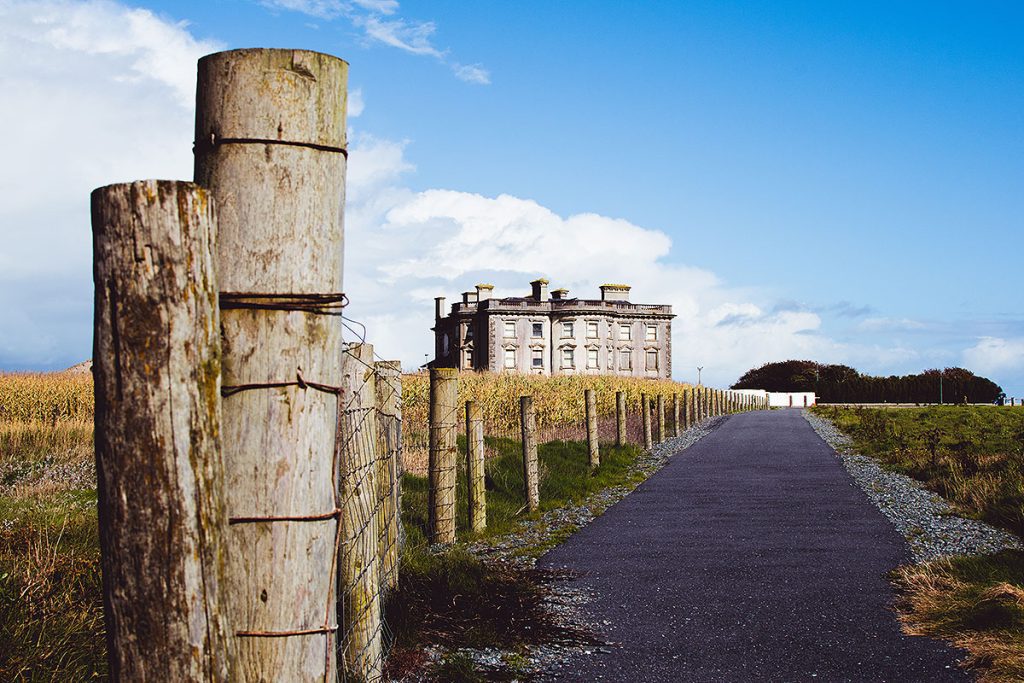
2 – Wicklow Gaol – Wicklow
Since 1702 there has been a prison on the site at Kilmartin Hill, now known as Wicklow Gaol. The buildings as they stand today were constructed over the remains of the first 1700s gaol and were gradually expanded and modernised over the course of the eighteenth and nineteenth centuries.
The prison rose to infamy during the The Rebellion of 1798 as freedom fighters were jailed in Wicklow prior to their exile or execution. This pattern continued through some of the darkest and bloodiest chapters in Irish history: the Famine, Easter Rising and the Civil War.
Accordingly, considering how linked the site is to such dark times, Wicklow Gaol has been the subject of paranormal activity for decades and has attracted worldwide interest from paranormal investigators who have reported a myriad of strange goings on. A young child is regularly seen in the former school room, Similarly, ghostly ‘inmates’ have been reported in the cells and along the gaol’s many walkways.
Click here to watch the Ghost Hunters International investigation of Wicklow Gaol.
3 – Leap Castle – Offaly
The history of Leap Castle as one of Ireland’s most haunted sites can also be traced back to the early 13th-century when it was first constructed by the O’Bannon clan. In the late 15th century, it was under the control of the notoriously violent O’Carroll clan who are key figures in the castle’s bloody history. The Irish castle was passed from father to son for generations with a string of grisly murders punctuating the O’Carroll’s brutal history at the castle. By the mid-17th-century, the castle moved into the hands of the Darby family, spearheaded by Jonathon Darby the 2nd, a Cromwellian soldier, and his wife, Mildred Darby – a key figure in establishing the castle as one of Ireland’s most haunted sites.
Over her tenure as the lady of the house, Mildred Darby reported a number of instances of paranormal activity. Speaking about living in the castle at night, she said, “There is something heavy that lies on people’s beds, and snores. They feel the weight of a great body pressing against them…A monk, with a tonsure and cowl, walks in at one window and out another.”
Many visitors still claim that ghosts wander the castle walls, corridors and archways of the castle and the site has also appeared on a number of paranormal investigation television programs including Scariest Places on Earth, Most Haunted and Ghost Hunters International.
4 – The Abbey of the Black Hag – Limerick
The ruins of Saint Katherine’s Augustinian Abbey, founded in 1298, is one of only a few remaining medieval convents in Ireland and widely considered as one of Ireland’s most haunted sites.
As the legend goes, the last abbess in charge of St. Katherine’s practiced witchcraft at the abbey and brought about a curse on the villagers that had settled near to the abbey. When Pope Martin V ordered the abbey’s closure on account of the conduct of the wicked abbess, the other nuns fled. Local folktales say that following the departure of her sisters, the malevolent abbess was left to live out her days in the deserted abbey alone. Due to the depraved conditions and her dedication to the dark arts, her skin blackened to such a degree that it gave rise to the local name for the convent, ‘The Abbey of the Black Hag’. The Legend of the Black Hag carries on to this day with many visitors still reporting strange, ghostly happenings.
Click here to find out more about the myths and mysteries surrounding The Abbey of the Black Hag.
5 – Charles Fort – Cork
Charles Fort is an imposing 17th-Century fort situated near Kinsale harbour, County Cork. Following the Irish Civil War, the Fort was left essentially abandoned until it was recognised as a National Monument in 1971. An extensive restoration of the Fort was undertaken over the subsequent decades, and today the Fort is open to the public.
The haunting at Charles Fort arises from a shocking family tragedy. When widower, Colonel Warrender, became Commander of the fort, he moved there with his only daughter, Wilful. Wilful betrothed to a young soldier and they married soon after her arrival at Charles Fort.
On their wedding night, as they took an evening walk along the fort’s ramparts, Wilful noticed some flowers on the rocks below.The guard on nightwatch volunteered to climb down and fetch the flowers for Wilful if her husband would take his place on guard while he ran this errand.
The climb down to retrieve the flowers took longer than expected, and after an hour of waiting for the guard to return, Wilful’s husband dozed off. Wilful’s father, Colonel Warrender was known for his cruelty as a commander, and spotted what he thought was a guard asleep while on duty. Enraged, he ordered that the guard stand up immediately. Wilful’s husband did not hear the Commander’s warning and when he did not stir, the furious Commander took out his pistol and shot him without a second thought.When Colonel Warrender approached the dead watchman he soon realised it was in fact his new son-in-law.
On learning that she had been widowed on her wedding night and that her father was responsible for the killing, Wilful was overcome with grief and threw herself from the battlements. Later that night, distraught over the death of his daughter, Colonel Warrender took his own life.
Locals say that Wilful now appears as a lady in white, wandering through the fortress. Witnesses have spotted her – still dressed in her wedding gown – ascending the stairs in the building before vanishing into thin air.
6 – Castle Leslie Estate – Monaghan
Now a top end hotel, Castle Leslie Estate is rich with spooky history and thought to be one of Ireland’s most haunted sites. One of the many paranormal reports include a monk who has been seen in the banquet hall, where other guests have also reported the sound of a mysterious child crying.
More recently, locals have reported strange goings on in the hotel’s basement. A member of staff reports that, on a visit to the basement, she looked up to find a grey man with a frightening expression approaching her quickly before disappearing within a few feet of reaching her.
The late Lady Constance is also said to haunt the famous Mauve bedroom. This story dates back to the account of Lady Leonie a past Lady of the castle. Lady Leonie was on her death bed when she was approached and had a conversation with an old woman who then miraculously vanished into thin air. The sleepy nurse who was caring for Lady Leonie at the time also saw her but assumed it was a member of the family coming to pay her respects so she said nothing.
Following the funeral service, the nurse and the family gathered in the Dining Room when the nurse noticed a painting and remarked that the old woman on the painting looked exactly like the mysterious woman who she had seen in the room that night. The family said this would have been impossible because the picture was of Lady Constance who was long dead.
Click here to watch Ghost Hunters investigate the hauntings of Castle Leslie.
7 – Malahide Castle – Dublin
Malahide Castle’s tumultuous 800-year history has contributed much to its haunted reputation. It is said that Malahide castle has at least four ghosts.
One of the castle’s most popular spectres is Lord Galtrim or Sir Walter Hussey. He was killed in battle during his wedding day in the 15th century and is said to wander the castle at night, groaning in pain while pointing to the spear wound on his side. Legend has it that he has been doomed to walk the earth as a heartbroken ghost as his bride-to-be married his rival immediately after his death.
Another spectre thought to inhabit the castle is Lady Maud Plunkett. She appears to castle workers and guests as she did on the day of her marriage to a Lord Chief Justice. She would chase her husband’s ghost through the corridors of the castle.
Puck is the ghost of a jester once present in the castle. It is said that one snowy night in December, Puck, the jester, was found with a stab to the heart, still wearing his jester suit and cap. Numerous castle visitors have reported seeing the jester’s face on photos taken in and around the castle.
Lastly, there is the ghost of Miles Corbet. Miles Corbett was gifted the castle by Oliver Cromwell and was later hanged as punishment for the many crimes he had committed during his time as the castle’s master. Now it is said that the ghost of Corbett appears around the castle in full armour before suddenly collapsing, falling into pieces and disappearing.
8 – McCarthy’s Pub – Tipperary
McCarthys pub, which doubles as an undertakers, is said by locals to attract its own Banshee. Members of the McCarthy family have long exchanged tales of artwork suddenly falling from the wall followed by the sound of three knocks inside and outside the premises to warn of an imminent death in the family. On a similar note, there have also long been reports of doors opening and closing unaided, heavy items moving around the kitchen as well as reports of deceased members of the McCarthy family appearing in the pub.
Click here to watch GhostEire investigate the infamous haunting of McCarthy’s pub.
9 – Moore Hall – Mayo
Moore Hall is a ruined house located near Carnacon in County Mayo. Construction began in 1792 and the grand property was the home of the massively influential Moore family until it was burned in 1923.
Folklore has it that the original founder – wine and brandy merchant, George Moore, was told that the site he had chosen to build his home on at Muckloon Hill was cursed. Shortly after construction, George lost his sight and his son John died following injuries sustained at the hands of the authorities for alleged participation in the Irish Rebellion.
Many visitors report having heard children’s laughter and singing echoing around the halls of the property. Other visitors have reported seeing shadows moving through empty spaces and experiencing the sensation of being watched by some unknown presence.
10 – Ballyseede Castle Hotel – Kerry
The Blennerhassett family are said to have lived on the Ballyseede Castle Estate since 1590 up to the death of Hilda Blennerhassett in 1965.
Since reopening as a hotel, many visitors have independently reported a strong scent of roses around the hotel’s main staircase even though there are no roses in the area.
It is said that the scent is an eerie announcement of the imminent arrival of the ghost of Hilda Blennerhassett herself. Hotel guests say that the Blennerhassett ghost is mostly seen roaming around the upper floor bedrooms of the castle and up and down the aforementioned main staircase.
Click here to find out more about the Ghost of Ballyseede Castle.
11 – Battle of Aughrim Battlefield Site – Galway
The Battle of Aughrim took place on the 25th of July 1691 when some 35,000 soldiers from eight nations with loyalties divided between William of Orange and King James II, went to battle in a field near Aughrim in County Galway.
Initially, the battle looked to be going the way of the James’ forces (the Jacobites) but fortunes quickly reversed when the key General St. Ruth was suddenly decapitated by a cannonball and the Jacobites began to retreat. William took no mercy on the fleeing soldiers and butchered them. In one day, over 7,000 men were killed and their bodies were left to rot in the field where they fell.
In one particular area of the battlefield, now forever to be known as the Bloody Hollow, there remained a large pool of blood that is said to have lasted for days following the battle. The mangled bodies of the Jacobites remained unburied for almost a year with the decomposing corpses reported to have been ripped apart by wild animals.
Spectral apparitions of Jacobite soldiers in uniform, gazing forlornly into the middle distance are a common occurrence in the area. Many say their dazed expressions betray their shock at losing a battle that they thought was theirs for the winning.
12 – St. Matthew’s Terrace – Longford
According to RTE, a family was forced to move out of their home in 1985 due to ghosts invading the space. They heard strange noises and asked for help at both the local church and the council but were turned down by both.
The family were so tormented by the haunting that they eventually opted to live in a caravan without electricity or running water, rather than spend another night in 13 St. Matthew’s Terrace.
Click here to watch the actual 1985 RTE report about the haunting at 13 St. Matthew’s Terrace.
13 – Kilkea Castle – Kildare
Kilkea Castle dates to 1180, making it one of Ireland’s oldest standing castles. The stunning castle was transformed into a hotel in the 1960s, and while the main building has eleven guest rooms, the resort now offers a total of 140 rooms.
One of the most noteworthy characters from the castle’s storied history is Gerald FitzGerald, the 11th Earl of Kildare. Some locals still believe Gerald possessed genuine magical powers due to his fascination with alchemy and his many dalliances with the black arts. This led to him being widely known as the Wizard Earl. The room in which the would be wizard is believed to have practiced his dark arts remains preserved to this day. Fittingly, his spirit is understood by many to remain there, some 400 years after his death. The “Haunted Room” is located in the castle’s main tower and guests are welcome to ascend the spiral staircase and experience it for themselves.
Local legend says that the Wizard Earl makes a triumphant return to the castle on horseback once every seven years when he arrives at midnight and keeps a dark vigil until dawn. Fascinatingly, hundreds of years later, one night in July 1984, a young couple walking by the graveyard on the grounds, witnessed the dark shape of a man on horseback, riding towards the castle in the moonlight before suddenly disappearing into nothingness.
Which of these eerie destinations is the most appealing? That’s for you to decide. All we can say is good luck on your travels around haunted ireland.
Check back with the Autoglass® blog again soon for guides, tips and explainers to help with all things motoring.
Book an appointment now
For a quick and easy way to make an appointment book online now.

